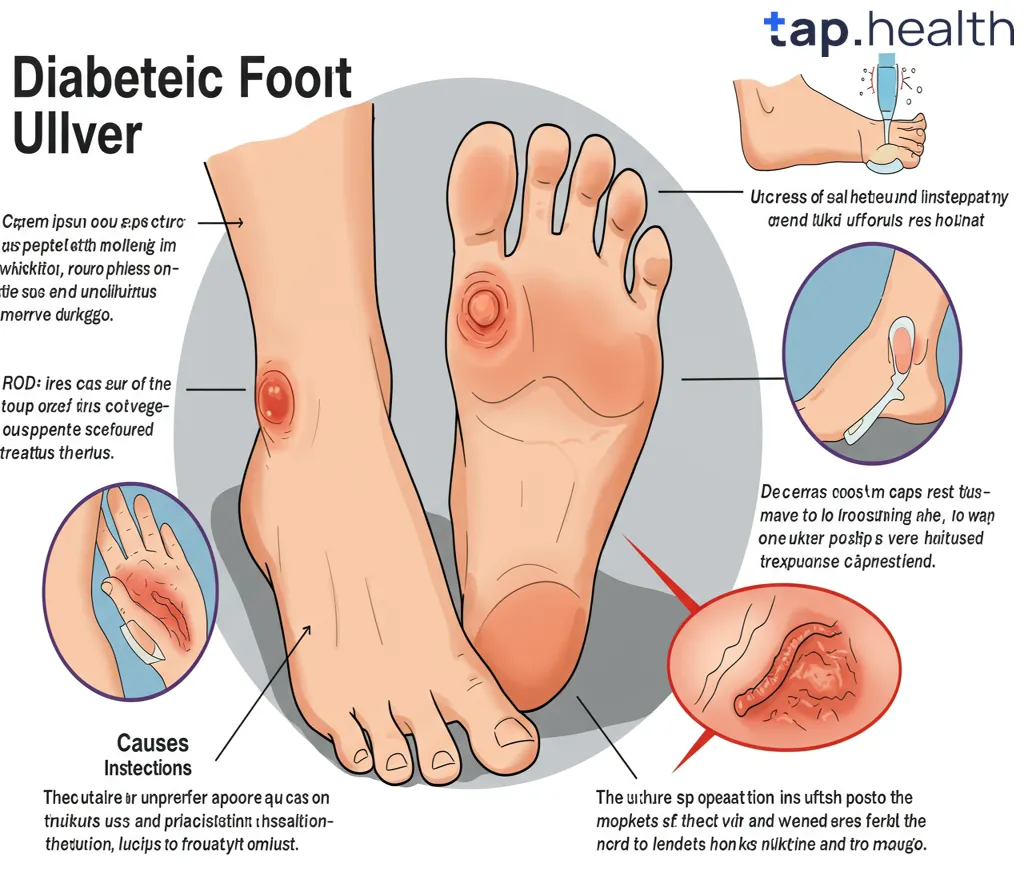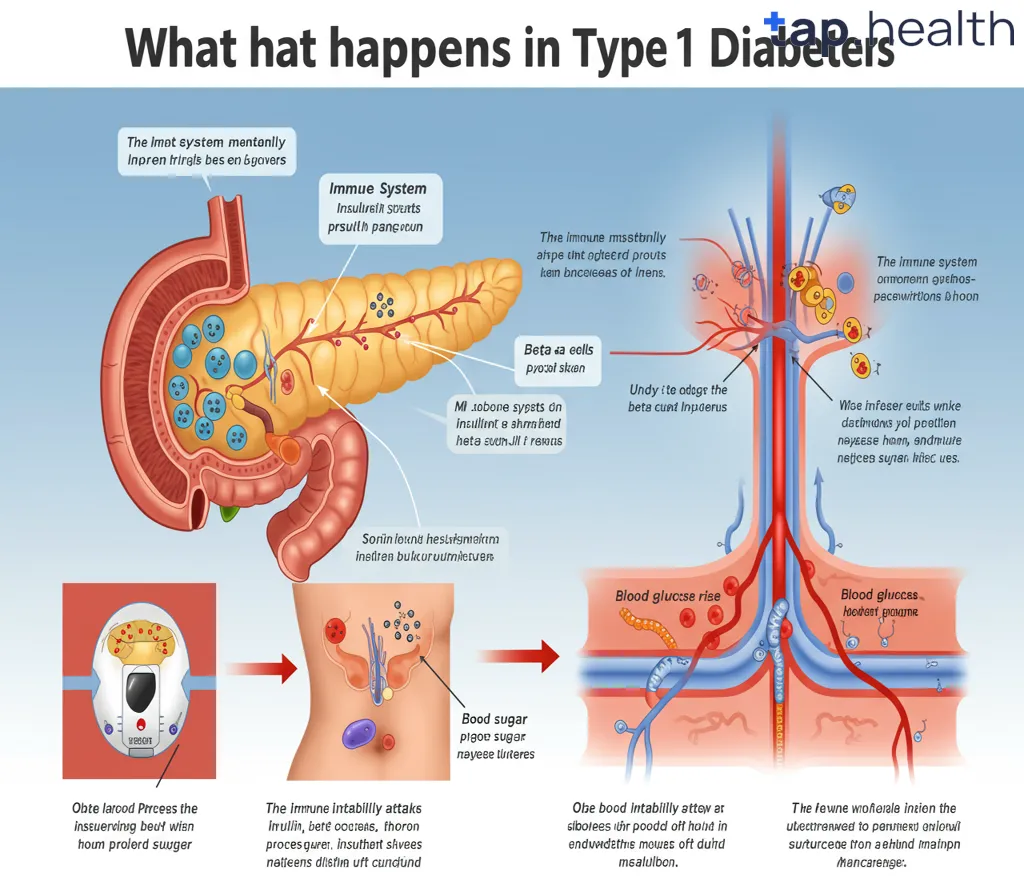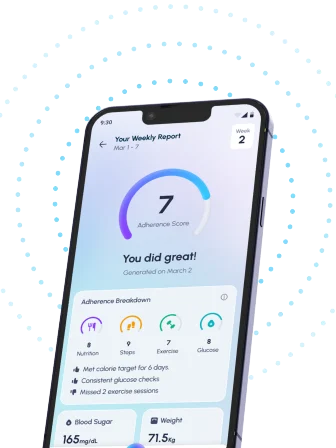Table of Contents
- High Red Blood Cell Count & Diabetes: What’s the Connection?
- Understanding Polycythemia Vera and its Link to Diabetes
- Elevated Red Blood Cell Count: Risk Factor for Diabetic Complications?
- Managing High Red Blood Cell Count in Patients with Diabetes
- Is Your High RBC Count a Diabetes-Related Problem? A Diagnostic Guide
- Frequently Asked Questions
- References
Have you ever wondered about the connection between your blood work and your risk for diabetes? Many people are surprised to learn about the potential link between high red blood cell count and diabetes. This blog post will delve into High Red Blood Cell Count and Diabetes: Understanding the Link, exploring the relationship between these two seemingly disparate health factors. We’ll uncover why an elevated red blood cell count might be a warning sign, discuss potential causes, and outline what you can do to manage your risk. Let’s unravel this important connection together and empower you with knowledge to better understand your health.
High Red Blood Cell Count & Diabetes: What’s the Connection?
High red blood cell count, or erythrocytosis, is a condition where your bone marrow produces too many red blood cells. While it can occur independently, there’s a notable association with diabetes, particularly in populations across India and other tropical countries. Research indicates that HbA1c levels above 9%, a strong indicator of poor diabetes control, are reported in over 30% of diabetic patients. This connection isn’t fully understood, but several factors may play a role.
Underlying Mechanisms
One theory suggests that chronically high blood sugar levels in diabetes can stimulate erythropoietin production, a hormone that signals the bone marrow to produce more red blood cells. This compensatory mechanism might be the body’s attempt to improve oxygen delivery to tissues, often compromised in individuals with poorly managed diabetes. Additionally, certain diabetes medications and associated health complications can also indirectly influence red blood cell production. Obesity, a significant risk factor for both diabetes and erythrocytosis, further complicates this relationship. In tropical regions, factors like iron overload from dietary habits and infections might exacerbate the issue. It’s important to note that diabetes can also affect other blood components. For example, you might also want to read more about Does Diabetes Affect Platelet Count? to get a more comprehensive understanding of how diabetes impacts your blood.
Practical Implications & Next Steps
Regular blood tests are crucial for individuals with diabetes, especially in high-risk populations. Monitoring not only blood glucose levels (HbA1c) but also complete blood counts (CBC) can help detect erythrocytosis early. Early detection allows for timely interventions to manage both conditions effectively, reducing the risk of long-term complications. If you live in India or a tropical country and have diabetes, discussing your blood count with your doctor is paramount. Don’t hesitate to ask questions about potential risks and the best management strategies for your individual situation. Understanding the impact of diabetes on your entire blood profile is key, and you might find the article on Does Diabetes Cause Low White Blood Cell Count? helpful in this regard.
Understanding Polycythemia Vera and its Link to Diabetes
The Unexpected Connection
Polycythemia vera (PV), a rare blood disorder characterized by an abnormally high red blood cell count, may share an unexpected link with diabetes, particularly prevalent in Indian and tropical countries. While not directly causative, studies suggest a correlation between PV and an increased risk of developing diabetes, or worsening existing diabetic conditions. This connection warrants further investigation, especially considering the high incidence of diabetes within these regions.
Understanding the Risks
The mechanisms behind this potential link are complex and not fully understood. One theory revolves around the impact of increased blood viscosity associated with PV. Elevated red blood cell counts thicken the blood, potentially affecting blood flow to vital organs like the kidneys. This is significant because diabetes increases the risk of kidney disease, with nearly 30% of diabetics developing diabetic nephropathy. Impaired kidney function, often a consequence of both PV and diabetes, can further complicate health outcomes. Additionally, some medications used to treat PV might influence glucose metabolism, potentially contributing to diabetes or worsening its management. For more information on the various factors that can contribute to diabetes, you might find our article on Understanding the Link Between Diabetes and Obesity helpful.
Seeking Expert Care in India and Tropical Countries
Given the prevalence of both diabetes and potential undiagnosed PV in India and tropical countries, it’s crucial to emphasize the importance of regular health checkups. Early detection of PV and proactive management of diabetes are key to mitigating potential complications. Consult with your physician or hematologist if you experience symptoms such as fatigue, headaches, dizziness, or vision problems, especially if you also have diabetes. Prompt diagnosis and treatment can significantly improve your quality of life and prevent severe health consequences. Don’t hesitate to seek medical attention; your health is your most valuable asset. It’s also worth noting that while many factors contribute to diabetes, the role of viruses or bacteria is still being researched; you can read more about this in our article, Is Diabetes Caused by a Virus or Bacteria?.
Elevated Red Blood Cell Count: Risk Factor for Diabetic Complications?
A high red blood cell count, or erythrocytosis, is often overlooked, but emerging research suggests it may significantly impact individuals with diabetes, particularly in regions like India and other tropical countries. While the exact mechanisms are still under investigation, the link between elevated red blood cells and increased risk of diabetic complications is becoming clearer. This is especially concerning given that women with diabetes already face a 40% higher risk of heart disease compared to men with diabetes.
Understanding the Connection
Increased red blood cell viscosity associated with erythrocytosis can lead to a higher risk of cardiovascular complications. Thicker blood flows less efficiently, increasing strain on the heart and potentially contributing to hypertension, a common problem among diabetics. This heightened cardiovascular strain, combined with pre-existing diabetic complications, can accelerate the development of serious health issues like heart attacks and strokes. In tropical climates, where pre-existing conditions like dehydration may be more common, the impact of erythrocytosis could be even more pronounced. Furthermore, iron overload, often associated with a high red blood cell count, can exacerbate oxidative stress, another key factor in diabetic complications. Understanding how diabetes affects blood flow is crucial in this context. How Does Diabetes Affect Blood Flow?
Actionable Steps for Indians and those in Tropical Countries
Regular blood tests are crucial for individuals with diabetes in India and other tropical nations. Monitoring red blood cell levels, alongside regular blood sugar checks, allows for early detection of erythrocytosis and timely interventions. Maintaining a healthy lifestyle, including a balanced diet rich in fruits and vegetables, and regular exercise, can help manage blood viscosity and overall health. Consult your doctor immediately if you experience symptoms like fatigue, dizziness, or headaches, which could indicate an elevated red blood cell count. Early diagnosis and proactive management are key to mitigating the risks associated with this often-overlooked complication of diabetes. It’s also important to note that a diabetic person’s ability to donate blood is subject to specific guidelines. Can a Diabetic Person Donate Blood: Guidelines & Facts
Managing High Red Blood Cell Count in Patients with Diabetes
Understanding Polycythemia in Diabetic Patients
A high red blood cell count, or polycythemia, can complicate diabetes management, particularly in individuals residing in hot and humid climates like those prevalent in India and other tropical countries. This is because dehydration, common in these regions, can further concentrate blood, leading to falsely elevated readings. It’s crucial to distinguish between true polycythemia and dehydration-induced elevations. Proper hydration is paramount for accurate assessment and effective management.
Managing Blood Viscosity and Blood Pressure
For individuals with diabetes, maintaining optimal blood pressure is critical. The target blood pressure is generally below 140/90 mmHg, although some guidelines recommend aiming for below 130/80 mmHg. High red blood cell count increases blood viscosity, potentially exacerbating hypertension and increasing the risk of cardiovascular complications. Therefore, managing polycythemia becomes an integral part of overall diabetes care. This might involve lifestyle modifications such as increasing fluid intake, particularly water, and incorporating regular exercise. Maintaining a healthy lifestyle is also crucial for boosting immunity while managing diabetes, which can further support overall health.
Seeking Expert Medical Advice
Regular blood tests are essential to monitor red blood cell counts and blood pressure. If you are a diabetic patient experiencing symptoms associated with polycythemia, such as headaches, dizziness, or shortness of breath, seek immediate medical attention. Your doctor will conduct a thorough evaluation, considering your specific circumstances and regional factors, to determine the underlying cause and recommend the appropriate treatment plan. Early detection and management are key to preventing serious complications. Consulting with a diabetologist experienced in managing patients in tropical regions is highly recommended. Managing other risk factors, such as high cholesterol, is also important; learn more about how to manage cholesterol levels with diabetes.
Is Your High RBC Count a Diabetes-Related Problem? A Diagnostic Guide
Understanding the Connection Between High RBC Count and Diabetes in Tropical Climates
A high red blood cell count (RBC), also known as erythrocytosis, can sometimes be linked to diabetes, particularly in individuals residing in tropical and Indian regions. While not a direct cause-and-effect relationship, elevated RBC levels can be a symptom of underlying conditions often associated with diabetes, such as dehydration or polycythemia. In India and other tropical countries, factors like malnutrition and infectious diseases can further complicate the picture. It’s crucial to understand that a high RBC count alone doesn’t diagnose diabetes. However, if your RBC count falls within the range of 5.7%–6.4%, it might indicate prediabetes, while a reading of 6.5% or higher often suggests diabetes, according to established guidelines.
Seeking Professional Guidance for Accurate Diagnosis
The relationship between high RBC count and diabetes requires careful consideration. Many factors influence RBC levels, and it’s essential to consult a healthcare professional for a comprehensive evaluation. Self-diagnosis based solely on RBC count is strongly discouraged. A doctor will consider your overall health, medical history, lifestyle, and conduct further tests to determine the underlying cause of your elevated RBC count, ruling out other potential issues before establishing a connection with diabetes. In tropical climates, where certain infections are more prevalent, a thorough examination is especially crucial for accurate diagnosis. They will perform necessary blood tests (including HbA1c for diabetes diagnosis – you can learn more about using an HbA1c test in our article, How to Use an HBA1C Test to Track and Improve Diabetes).
Taking Action: The Next Steps
If you’re concerned about a high RBC count or have a family history of diabetes, scheduling an appointment with a doctor is the most important step. They will perform necessary blood tests and advise on appropriate management strategies. Remember, early detection and intervention are key to managing both diabetes and any related complications. Don’t hesitate to seek medical attention in India or other tropical countries, where access to quality healthcare is improving continually. If you are unsure about the early signs of diabetes, it’s worth reading our article on 10 Early Signs and Symptoms of Diabetes? – Tap Health.
Frequently Asked Questions on High Red Blood Cell Count & Diabetes
Q1. What is the link between high red blood cell count (erythrocytosis) and diabetes?
Studies show a correlation between elevated red blood cell count and diabetes, particularly in tropical regions like India. High blood sugar may stimulate the production of erythropoietin, leading to increased red blood cell production. Obesity and certain diabetes medications can also be contributing factors.
Q2. How can a high red blood cell count affect someone with diabetes?
Increased red blood cells thicken the blood (increase viscosity), potentially worsening cardiovascular complications common in diabetes, such as high blood pressure (hypertension).
Q3. How is a high red blood cell count diagnosed in individuals with diabetes?
Regular blood tests are crucial. These include a complete blood count (CBC) and HbA1c tests to monitor red blood cell levels and long-term blood sugar control.
Q4. What symptoms might indicate a high red blood cell count, and when should I seek medical attention?
Symptoms can include fatigue, headaches, and dizziness. If you have diabetes and experience any of these, it’s crucial to consult a doctor immediately for evaluation.
Q5. What is the importance of early detection and intervention for high red blood cell count in diabetics?
Early diagnosis through regular blood tests allows for timely intervention, potentially reducing or preventing the long-term cardiovascular complications associated with both high blood sugar and erythrocytosis.
References
- A Practical Guide to Integrated Type 2 Diabetes Care: https://www.hse.ie/eng/services/list/2/primarycare/east-coast-diabetes-service/management-of-type-2-diabetes/diabetes-and-pregnancy/icgp-guide-to-integrated-type-2.pdf
- Electronic Health Records-Based Data-Driven Diabetes Knowledge Unveiling and Risk Prognosis : https://arxiv.org/pdf/2412.03961




